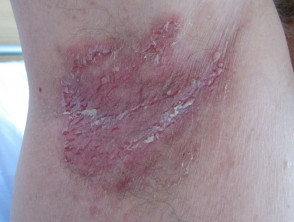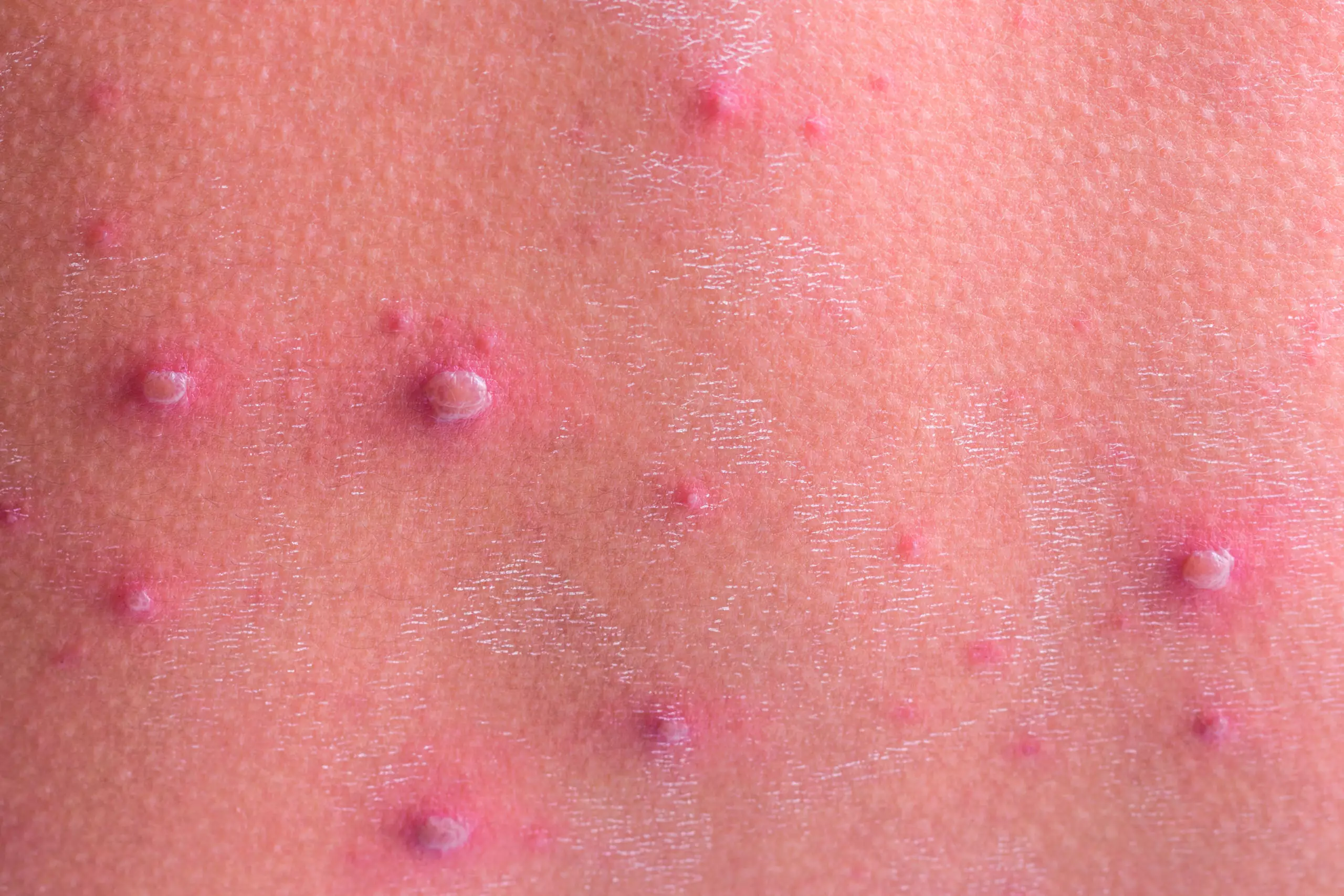What are bedsores?

Bedsores can happen when a person is bedridden or otherwise immobile, unconscious, or unable to sense pain. Bedsores are ulcers that happen on areas of the skin that are under pressure from lying in bed, sitting in a wheelchair, or wearing a cast for a prolonged time. Bedsores are also called pressure injuries, pressure sores, pressure ulcers, or decubitus ulcers.
Bedsores can be a serious problem among frail older adults. They can be related to the quality of care the person receives. If an immobile or bedridden person is not turned, positioned correctly, and given good nutrition and skin care, bedsores can develop. People with diabetes, circulation problems, and poor nutrition are at higher risk.
What causes bedsores?
Butt crack rashes can be single or clustered reddish spots or bumps that lead to itching of the skin. They usually appear on the butt crack or the opening of the anus or even around the butt cheeks. In adults, the location, pattern and extent of the rash can vary from individual to individual. The bumps may turn into small boils or blisters and these may lead to scabs when they crust over. In HIV patients, this is a common feature and can be confused with pimples. Other sexually transmitted infections include gonorrhea and syphilis which can cause itchy bumps on the skin of the buttock. Intertrigo can also affect the skin between the buttocks. The affected skin will often be very raw and may itch or ooze. In severe cases, intertrigo may cause a foul odor, and the skin may crack and bleed.
A bedsore develops when blood supply to the skin is cut off for more than 2 to 3 hours. As the skin dies, the bedsore first starts as a red, painful area, which eventually turns purple. Left untreated, the skin can break open and the area can become infected.
A bedsore can become deep. It can extend into the muscle and bone. Once a bedsore develops, it is often very slow to heal. Depending on the severity of the bedsore, the person's physical condition, and the presence of other diseases (such as diabetes), bedsores can take days, months, or even years to heal. They may need surgery to help the healing process.
Bedsores often happen on the:
- Buttocks area (on the tailbone or hips)
- Heels of the feet
- Shoulder blades
- Back of the head
- Backs and sides of the knees
What are the risk factors for bedsores?
Being bedridden, unconscious, unable to sense pain, or immobile increases the risk that a bedsore will develop. The risk increases if the person is not turned, positioned correctly, or provided with proper nutrition and skin care. People with diabetes, circulation problems and malnutrition are at higher risk.
What are the symptoms of bedsores?
Bedsores are divided into 4 stages, from least severe to most severe. These are:
- Stage 1. The area looks red and feels warm to the touch. With darker skin, the area may have a blue or purple tint. The person may also complain that it burns, hurts, or itches.
- Stage 2. The area looks more damaged and may have an open sore, scrape, or blister. The person complains of significant pain and the skin around the wound may be discolored.
- Stage 3. The area has a crater-like appearance due to damage below the skin's surface.
- Stage 4. The area is severely damaged and a large wound is present. Muscles, tendons, bones, and joints can be involved. Infection is a significant risk at this stage.
A wound is not assigned a stage when there is full-thickness tissue loss and the base of the ulcer is covered by slough or eschar is found in the wound bed. Slough may be tan, grey, green, brown, or yellow in color. Eschar is usually tan, brown or black.

How are bedsores diagnosed?
Healthcare providers diagnose bedsores by inspecting the skin of those at risk for them. They are staged according to their appearance.
How are bedsores treated?

Specific treatment of a bedsore is discussed with you by your healthcare provider and wound care team and based on the severity of the condition. Treatment may be more difficult once the skin is broken, and may include the following:
- Removing pressure on the affected area
- Protecting the wound with medicated gauze or other special dressings
- Keeping the wound clean
- Ensuring good nutrition
- Removing the damaged, infected, or dead tissue (debridement)
- Transplanting healthy skin to the wound area (skin grafts)
- Negative pressure wound therapy
- Medicine (such as antibiotics to treat infections)
Healthcare professionals will watch the bedsore closely. They will document size, depth, and response to treatment
What are the complications of bedsores?
Once a bedsore develops, it can take days, months, or even years to heal. It can also become infected, causing fever and chills. An infected bedsore can take a long time to clear up. As the infection spreads through your body, it can also cause mental confusion, a fast heartbeat, and generalized weakness.
Can bedsores be prevented?
Bedsores can be prevented by inspecting the skin for areas of redness (the first sign of skin breakdown) every day with particular attention to bony areas. Other methods of preventing bedsores and preventing existing sores from getting worse include:
- Turning and repositioning every 2 hours
- Sitting upright and straight in a wheelchair, changing position every 15 minutes
- Providing soft padding in wheelchairs and beds to reduce pressure
- Providing good skin care by keeping the skin clean and dry
- Providing good nutrition because without enough calories, vitamins, minerals, fluids, and protein, bed sores can’t heal, no matter how well you care for the sore
Key points about bed sores
- Bedsores are ulcers that happen on areas of the skin that are under pressure from lying in bed, sitting in a wheelchair, and/or wearing a cast for a prolonged period.
- Bedsores can happen when a person is bedridden, unconscious, unable to sense pain, or immobile.
- Bedsores can be prevented by inspecting the skin for areas of redness (the first sign of skin breakdown) every day with particular attention to bony areas.
What Are Blisters On The Buttocks
Next steps
What Causes Blisters On The Buttocks
Tips to help you get the most from a visit to your healthcare provider:
Blister In Crack Of Buttock
- Know the reason for your visit and what you want to happen.
- Before your visit, write down questions you want answered.
- Bring someone with you to help you ask questions and remember what your provider tells you.
- At the visit, write down the name of a new diagnosis, and any new medicines, treatments, or tests. Also write down any new instructions your provider gives you.
- Know why a new medicine or treatment is prescribed, and how it will help you. Also know what the side effects are.
- Ask if your condition can be treated in other ways.
- Know why a test or procedure is recommended and what the results could mean.
- Know what to expect if you do not take the medicine or have the test or procedure.
- If you have a follow-up appointment, write down the date, time, and purpose for that visit.
- Know how you can contact your provider if you have questions.